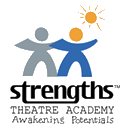8 Tips to Improve Body Language
Body language plays a crucial role in our daily interactions, influencing how others perceive us and how we communicate nonverbally. In this article, we will explore some useful tips to improve body language and enhance our overall communication effectiveness.
Whether we are aware of it or not, our body language can convey messages and emotions that can greatly impact our personal and professional lives. Fortunately, by understanding and consciously working on our body language, we can improve our nonverbal communication skills and make a positive impression.

Body language refers to the non-verbal signals that we communicate through our physical movements, gestures, and facial expressions. It plays a crucial role in how we convey and interpret messages.
Improving body language can help you appear more confident, approachable, and engaged in conversations. Some key aspects to consider are posture, eye contact, gestures, facial expressions, and mirroring.
Good posture involves standing tall with shoulders back, indicating confidence. Making eye contact demonstrates attentiveness and interest. Open gestures, such as uncrossed arms, convey a welcoming and receptive attitude.
Facial expressions, like a genuine smile, project warmth, and approachability. Mirroring others subtly can establish rapport and create a sense of connection. By paying attention to and refining these non-verbal cues, you can enhance your communication skills and make a positive impression.
From Awkward to Awesome: Harness the Secrets of Body Language for Better Communication

1. Maintain Good Posture: Having a good posture portrays confidence, openness, and professionalism. Stand or sit straight with your shoulders back and relaxed. Avoid slouching or crossing your arms, which can give the impression that you’re being defensive or indifferent. When you have an upright posture, you exude a sense of self-assurance, engage others better, and create a positive impression.
2. Make Eye Contact: Eye contact is a powerful non-verbal cue that conveys attentiveness, trust, and respect. When engaging in conversation, maintain eye contact with the person you are speaking to. It signifies that you are engaged and actively listening to them. However, it is essential to strike a balance as excessive or intense eye contact can be uncomfortable or intimidating. Adjust your gaze, allowing for natural breaks, while still demonstrating interest and connection.
3. Use Gestures: Effective gestures can complement and enrich verbal communication. They add emphasis, clarity, and engagement to your interactions. Utilize your hands to support your words but avoid excessive or distracting movements. Be aware of cultural variations and modify your gestures as necessary. Purposeful and controlled gestures enhance your message and contribute to a stronger connection with your audience.
4. Develop Active Listening Skills: Effective body language is not only about how you present yourself but also about how you respond to others. Engage in active listening by using appropriate non-verbal cues. Nodding your head, maintaining eye contact, and providing verbal affirmations demonstrate attentiveness and understanding. Show genuine interest in the conversation, ask relevant questions, and empathize with the speaker. To further enhance your body language and overall communication skills, consider seeking guidance from a professional and the best personality development trainer.
5. Facial Expressions: Your face is a canvas for emotions and intentions. Be conscious of your facial expressions as they can greatly impact your communication. Maintain a pleasant and approachable expression, and smile genuinely when appropriate. Smiling not only makes you more likable but also creates a favorable atmosphere for interaction. Be aware of negative or inappropriate expressions that may convey disinterest or hostility.
6. Pay Attention to Personal Space: Respecting personal space is crucial in building comfortable and respectful interactions. Be aware of each individual’s preferred distance and adjust accordingly. Invading personal space can make others feel uncomfortable while keeping too much distance might create a sense of detachment. Gauge the situation and adapt your proximity to create an environment of ease and mutual respect.
7. Mirror and Match: Mirroring and matching the body language of the person you are conversing with can establish a subconscious connection and rapport. Subtly mimic their gestures, posture, and energy level. However, it is essential to be genuine and avoid overdoing it, as it may become obvious or seem inauthentic. Mirroring helps create a sense of understanding and harmony, fostering better communication.
8. Practice and Seek Feedback: Improving body language requires consistent practice and self-awareness. Pay attention to your non-verbal cues in various social situations and evaluate their impact. Seek feedback from trusted friends or mentors who can provide constructive criticism. Video recording yourself during practice sessions can also be helpful to identify areas for improvement. In addition to focusing on improving your body language, it is essential to promote personality development for kids. Teaching kids about body language from an early age can help them develop effective communication skills and positive self-expression.
Conclusion
Improving your body language can have a significant impact on your communication skills, interpersonal relationships, and overall presence. Incorporating these tips into your daily interactions can help you project confidence, approachability, and openness.
Originally published at https://strengthstheatre.weebly.com.
